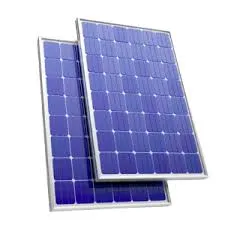efficiency of polycrystalline solar panels
Understanding the Efficiency of Polycrystalline Solar Panels
Polycrystalline solar panels have become a popular choice for renewable energy generation, particularly due to their cost-effectiveness and reliable performance. As the demand for sustainable energy sources continues to rise, it is essential to comprehend the efficiency of these solar panels and how they compare to other technologies.
The efficiency of a solar panel refers to the percentage of sunlight that it can convert into usable electrical energy. Polycrystalline solar panels typically have an efficiency range of about 15% to 22%. While this might seem relatively modest compared to monocrystalline panels, which can achieve efficiencies up to 24%, polycrystalline panels have their own unique advantages that make them attractive to consumers and businesses alike.
One of the primary benefits of polycrystalline panels is their lower manufacturing cost. They are produced by melting multiple silicon crystals together, which reduces the energy and material costs compared to the production of monocrystalline panels. This cost-effectiveness translates to a lower initial investment for homeowners and businesses looking to transition to solar energy. As a result, polycrystalline panels are often more accessible to a broader range of consumers.
efficiency of polycrystalline solar panels

Another significant advantage of polycrystalline panels is their performance in high-temperature environments. While all solar panels experience a decrease in efficiency as temperatures rise, polycrystalline panels have been recognized for maintaining stable performance under such conditions. This property can be advantageous in warmer climates where excessive heat can impede the efficiency of other types of panels.
Despite their overall advantages, it is essential to note the potential downsides of polycrystalline solar panels. Their lower efficiency means that they require more space to produce the same amount of energy as monocrystalline panels. For individuals or businesses with limited roof space, this can be a crucial factor in their decision-making process. Additionally, polycrystalline panels typically exhibit a lower power output in shaded conditions compared to their monocrystalline counterparts.
In conclusion, the efficiency of polycrystalline solar panels plays a vital role in their adoption as a renewable energy source. While they may not match the highest efficiency ratings of monocrystalline panels, their affordability, reliable performance in high temperatures, and overall durability make them a solid choice for many users. As technology continues to evolve, it is likely that we will see further improvements in the efficiency of polycrystalline solar panels, enhancing their appeal in the growing market for sustainable energy solutions. For those considering solar energy, it is essential to evaluate both efficiency and cost to determine the best option for their unique needs.
-
String Solar Inverter: The High-Efficiency Solution for Smart Solar EnergyNewsJul.14,2025
-
Revolutionizing Rooftop Energy with the Power of the Micro Solar InverterNewsJul.14,2025
-
Power Independence with Smart Off Grid Solar Inverter SolutionsNewsJul.14,2025
-
On Grid Solar Inverter: Powering the Future with Smart Grid IntegrationNewsJul.14,2025
-
Monocrystalline Solar Panels: High-Efficiency Power for the Future of Clean EnergyNewsJul.14,2025
-
Bifacial Solar Panel: A Smarter Investment for Next-Generation Energy SystemsNewsJul.14,2025







